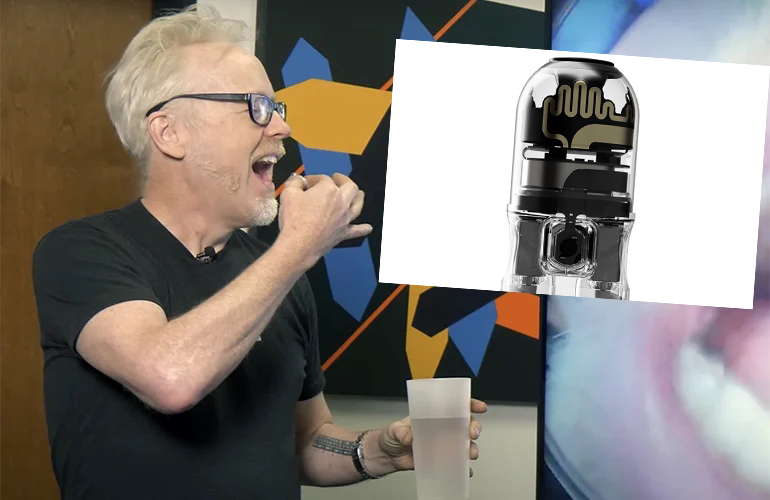In the intersection of science fiction and medical innovation, Torrey Smith stands as a visionary pushing the boundaries of what's possible in healthcare. The CEO of Endiatx, speaking at RoboBusiness 2024, painted a picture of a future where nuclear-powered microsurgeons and bio-inspired robots navigate through human bodies. But unlike purely speculative fiction, Smith and his company are already turning these ambitious visions into reality with their groundbreaking PillBot technology.
The Journey from Desert Innovation to Medical Revolution
Before revolutionizing medical technology, Smith was building massive Tesla coils in the Nevada desert. As the founder of Burning Man's "Sextant" theme camp, he orchestrated the construction of a 30-foot, million-volt Tesla coil and a tower featuring a mid-height café with a zip line spanning a city block. This experience with ambitious engineering projects taught Smith a crucial lesson: the line between impossible dreams and achievable reality is often thinner than it appears.
"Doing all that, I realized there's a difference between what you do as a hobby and as a professional," Smith reflects. This philosophy has carried through to Endiatx, where the immediate focus is on the PillBot – a swallowable, camera-equipped robot currently in clinical trials that could revolutionize how we perform endoscopies.
PillBot: Reimagining Gastric Diagnostics
The current reality of upper endoscopy is both time-consuming and expensive, often involving multiple medical visits and costs ranging from $1,500 to $10,000. Smith's vision with PillBot is radically different: transform months of hospital visits into a single remote consultation. The device, which Smith himself has swallowed 71 times during development, allows doctors to remotely control a camera through the stomach, providing real-time imaging that could replace traditional invasive procedures.
The technology has progressed from initial skepticism to serious clinical trials in New Zealand. PillBot 2.0, dubbed the "racehorse" model, is already in development, promising dramatic size reductions through innovative battery technology and smaller motors. With $9 million in funding, Endiatx is positioning itself for what Smith describes as a "Google of healthcare-level opportunity."
From Living Room to Clean Room
Endiatx's evolution from a living room startup to a sophisticated medical device company reflects Silicon Valley's enduring capacity for innovation. The company now operates its own clean room, performs RF analysis, and even runs an Arburg injection molding machine acquired from eBay – a year-long journey of parts replacement and mechanical learning that exemplifies their hands-on approach to innovation.
Their demonstrations at prestigious events like Amazon's MARS conference and TED have captured attention and investment, proving that their vision extends beyond mere speculation. A particularly poignant moment came when Smith shared how a close associate's family member had died from stomach cancer after avoiding conventional endoscopy. "There's no real loser here [with PillBot] except stomach cancer," Smith noted.
The Future: Nuclear-Powered Microsurgeons and Beyond
While PillBot represents Endiatx's current focus, Smith's vision extends to even more ambitious frontiers. He envisions ultra-miniaturized surgical robots the size of rice grains, powered by nuclear beta-voltaic batteries. These microscopic devices would use custom silicon chips and MEMS technology instead of conventional circuit boards and batteries.
Addressing potential concerns about nuclear-powered devices in the body, Smith puts it in perspective: "If we can shield and trap [the radiation] so that it just turns into an imperceptible amount of heat, hopefully it'd be able to say it's like less radiation than eating a banana." He points to the established use of radioactive seeds in cancer treatment as precedent for safely implementing such technology.
Silicon Valley's Enduring Innovation Spirit
Despite recent trends of tech companies relocating to other cities, Smith remains committed to Silicon Valley's innovative potential. "We built Endiatx in my living room, and I'm determined to show the world that magic still exists in Silicon Valley," he declares. This sentiment, coupled with the company's impressive progress, suggests that the region's capacity for transformative innovation remains strong.
As Endiatx continues to develop its technology, from the practical PillBot to more futuristic concepts, they're demonstrating how science fiction can become science fact through determined innovation. "Someday, there will be nanobots," Smith asserts. "It's inevitable — it's just a question of when and who's going to do it." Based on Endiatx's trajectory, they might just be the ones to do it.


















